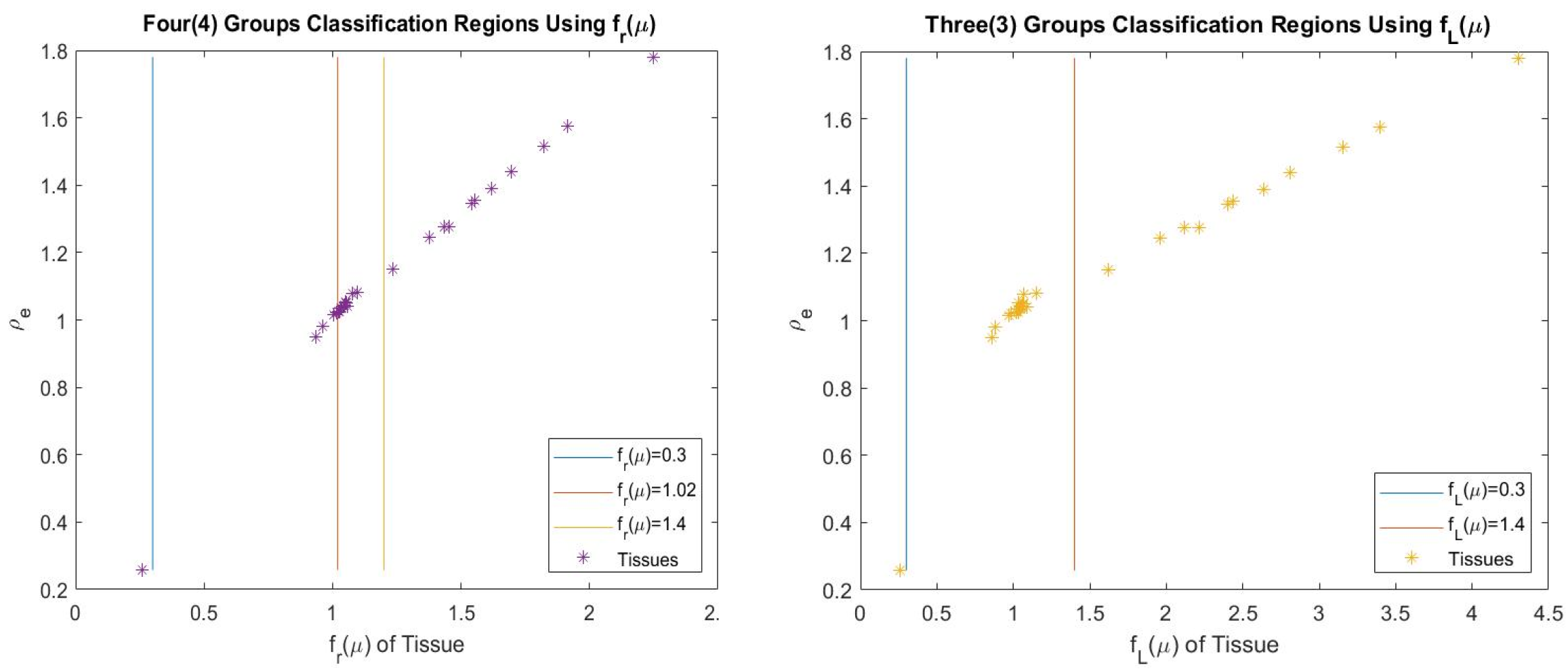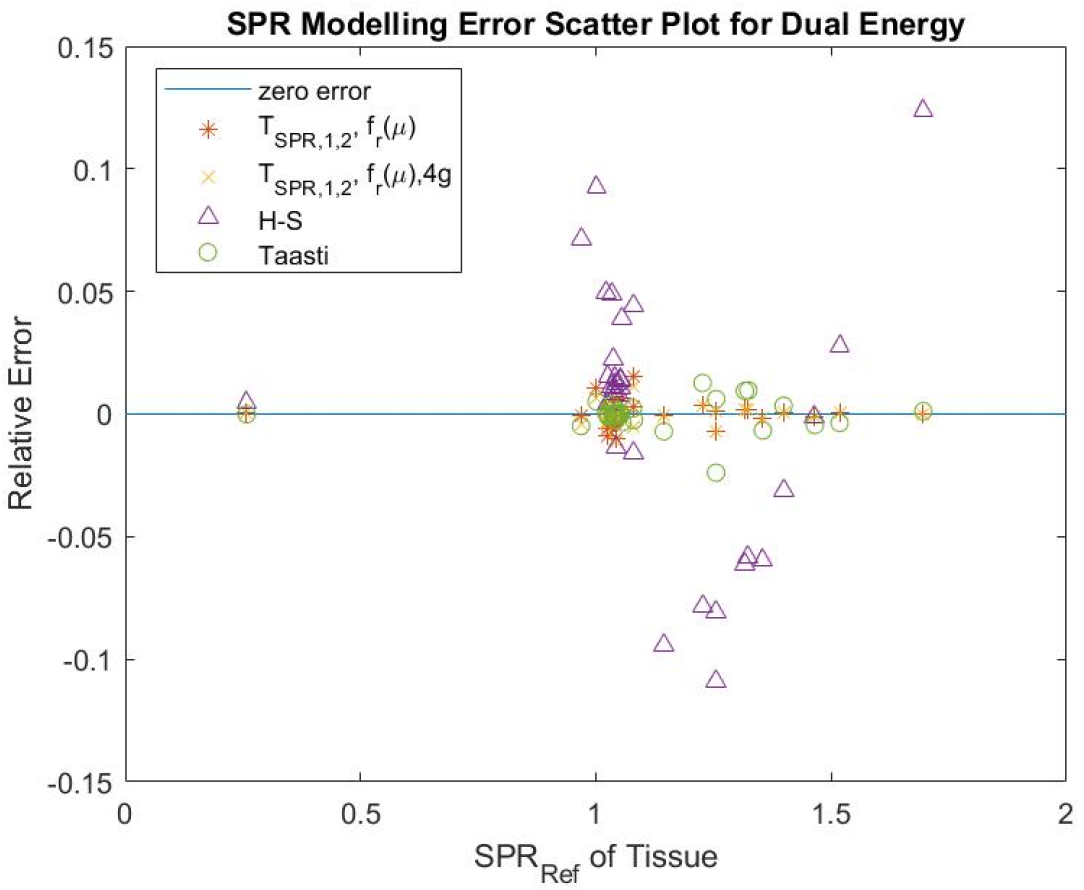Copyright
©The Author(s) 2025.
World J Radiol. Jun 28, 2025; 17(6): 105728
Published online Jun 28, 2025. doi: 10.4329/wjr.v17.i6.105728
Published online Jun 28, 2025. doi: 10.4329/wjr.v17.i6.105728
Figure 1 This is the modeling plot of SPR0,3 and SPR1,1 (shows the relationship between the actual stopping power ratio data and the proposed model).
The left figure is for SPR0,3 and the right figure is for SPR1,1. The stopping power ratio is plotted against the relative electron density on the graph. The small circles represent the actual value for the tissues and the line represents the model estimates. Citation: Chika CE. Estimation of Proton Stopping Power Ratio and Mean Excitation Energy Using Electron Density and Its Applications via Machine Learning Approach. J Med Phys 2024; 49: 155-166. Copyright© The Authors 2024. Published by Wolters Kluwer Medknow Publications. This article is available under the terms of the Creative Commons Attribution-NonCommercial-ShareAlike License (CC BY-NC-SA), which permits non-commercial use, distribution and reproduction in any medium, provided the original work is properly cited. Permission only needs to be obtained for commercial use. SPR: Stopping power ratio.
Figure 2 Tissue classification using f(μ).
A: Four regions of classification (lung tissues if fr ≤ 0.3, soft tissue 1 if 0.3 < fr ≤ 1.02, soft tissue 2 if 1.02 < fr ≤ 1.4, and bone tissue if fr > 1.4); B: Three regions of classification (lung tissues if fL ≤ 0.3, soft tissue if 0.3 < fL ≤ 1.4, and bone tissue if fL > 1.4). Citation: Chika CE. Machine Learning Approach and Model for Predicting Proton Stopping Power Ratio and Other Parameters Using Computed Tomography Images. J Med Phys 2024; 49: 519-530. Copyright© The Authors 2024. Published by Wolters Kluwer Medknow Publications. This article is available under the terms of the Creative Commons Attribution-NonCommercial-ShareAlike License (CC BY-NC-SA), which permits non-commercial use, distribution and reproduction in any medium, provided the original work is properly cited. Permission only needs to be obtained for commercial use.
Figure 3 Individual tissues stopping power ratio relative error for the presented dual energy methods as presented in Chika[21].
The relative stopping power ratio estimating error for each tissue is plotted against the reference (actual) stopping power ratio on the graph. This is plotted for different methods as shown in figure legend where fr (μ)= μL/μH. Citation: Chika CE. Machine Learning Approach and Model for Predicting Proton Stopping Power Ratio and Other Parameters Using Computed Tomography Images. J Med Phys 2024; 49: 519-530. Copyright© The Authors 2024. Published by Wolters Kluwer Medknow Publications. This article is available under the terms of the Creative Commons Attribution-NonCommercial-ShareAlike License (CC BY-NC-SA), which permits non-commercial use, distribution and reproduction in any medium, provided the original work is properly cited. Permission only needs to be obtained for commercial use. SPR: Stopping power ratio.
- Citation: Chika CE. Advances in dual energy computed tomography approach for proton stopping power ratio computation in radiotherapy. World J Radiol 2025; 17(6): 105728
- URL: https://www.wjgnet.com/1949-8470/full/v17/i6/105728.htm
- DOI: https://dx.doi.org/10.4329/wjr.v17.i6.105728











